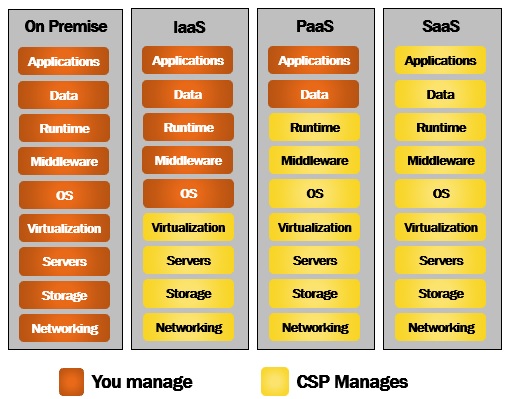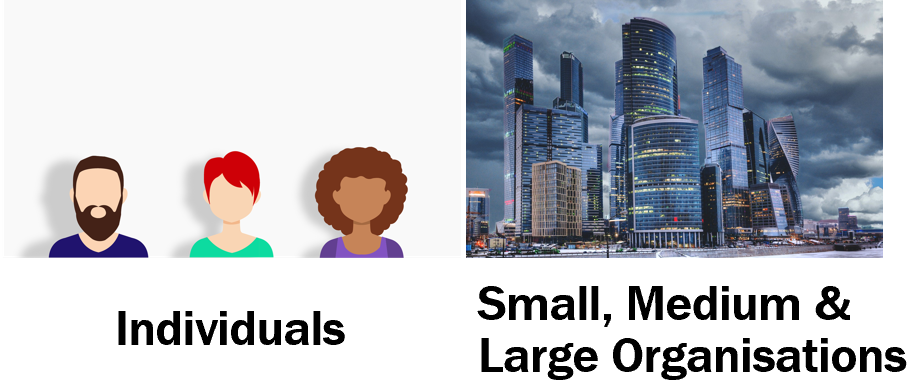What is SaaS in cloud computing | Software as a Service
In this article we will understand, what is Software as a Service (also called SaaS). Who uses this service. Few examples and the benefits it provides.
What is Software as a Service (SaaS)
In our previous 2 articles, we discussed
As you can see from the diagram below, with Software as a Service, the cloud service provider manages everythig for us. We do not have to worry about any of the following
- Purchasing and setting up physical hardware.
- Installing operating system.
- Virtualization.
- Setting up network.
- Installing and maintaining middleware, runtime and applications.

All these are taken care by the service provider. So the bottom line is, all the hardware and software is maintained for us by the cloud service provider. We simply access the software i.e the application which we want to use for our business over the internet. The software runs at the cloud service provider data center on their physical servers. Event the data the application captures is stored at the cloud service provider data center. So the point, that I am trying to make is, everything is managed for us by the cloud service provider. We simply access the service over the internet and as it supports pay as you go model, we pay a monthly fee based on the usage.
Who uses Software as a Service
Everyone, individuals and organisations of all sizes - small, medium and even large enterprises.

Examples of Software as a Service
I bet most of us will be using at least 2 to 3 Software as a Service applications. A few examples of Software as a Service are GMAIL, Netflix, Amazon Prime, Dropbox, Google Drive and Office 365. How many of these SaaS applications do you use. If you aske me, I use all ofthem. If we take GMAIL for example. It is hosted by Google on their physical servers at their data-centers. We don't host or install anything on our computer or laptop. We simply fire up our favourite browser, point it to GMAIL.com and access the GMAIL software as a service over the internet.
There are a wide variety of SaaS applications both for personal and business use cases. We have SaaS applications for customer relationship management (CRM), financial management, sales management, human resource management (HRM), billing, entertainment, storage, collaboration etc.
Benefits of Software as a Service
Very easy to get started
It is very easy to get started with a SaaS application. Think about a traditional business application running on-premise. You need to purchase hardware i.e a physical server and all the related hardware. Install the operating system, runtime, middleware and any other dependencies. On top of this you install the software application, configure it and then you have it available for business. You also need to recruit work-force to maintain the servers and the application i.e install patches and updates.
Compare this to a SaaS application. You simply fireup your favourite browser and access the SaaS application over the internet. There might be some customization and configuration required, but it is definitely very easy to get started with a SaaS application than running that same application on-premise.
Accessibility
You access SaaS applications over the internet. So this means as long as you have an internet connection, you can access a SaaS application from anywhere and any internet enabled device.
Automatic updates
With a SaaS application you don't have to worry about installing updates or patches. These are automatically provided by the cloud service provider, that too, in most cases, with a ZERO down-time. This obviously reduces the burden on the in-house development and IT staff.
Flexible usage-based pricing
Flexible usage-based pricing. No upfront huge capital expenditure. You only pay for what you use. For example, if you have 10 users using the application you only pay for that 10 users. You also have the flexibility to scale the number of users up and down depending on your business needs.
Reduced financial risk
With SaaS applications there is less financial risk. For example, if you want to see if a SaaS application adds value to your business, you can start with 1 or 2 users and see if it's really adding value. If it is, then you have the option to scale up the number of users. If it is not adding any value, you simply stop using the app and the payments. These days, most cloud service providers also offer free trials. You can try a SaaS app for free and see if it is adding any value. If it is not, there is no cost to your business anyway. Compare this to buying an expensive hardware and a packaged app upfornt. With SaaS applications, businesses definitely have reduced financial risks.
Affordability
Affordability is another great benefit. Applications and solutions that fall in the category of CRM (Customer Relationship Management) and ERP (Enterprise Resource Planning) for example are very expensive to buy out right. Especially for individuals, small and medium organisations, it's a huge burden. However, SaaS applications flexible pay-as-you-go model allows even small and medium organisations to trial and experiment if these expensive apps add value to their business. Basically it levels the playing field for everyone, including small businesses and individuals.
© 2020 Pragimtech. All Rights Reserved.

